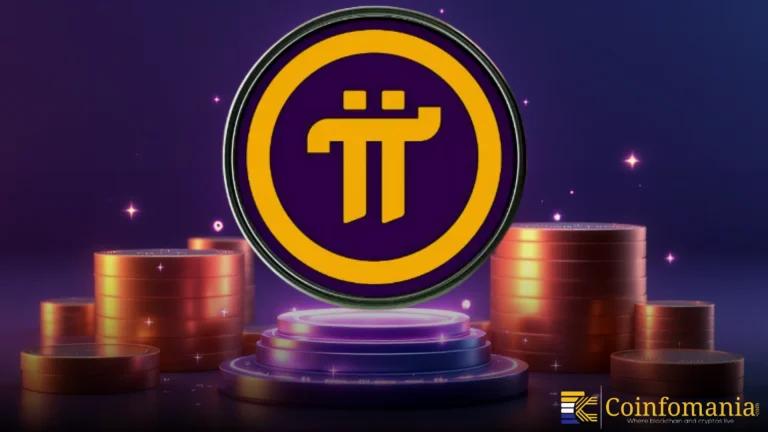World Liberty Financial Expands USD1 Stablecoin
USD1 stablecoin expands across multiple networks with Chainlink CCIP integration challenging rivals USDT and USDC.

Quick Take
Summary is AI generated, newsroom reviewed.
USD1 stablecoin expands across Ethereum BNB Chain and TRON networks
Integration with Chainlink CCIP boosts security and cross-chain movement
Institutions adopt USD1 stablecoin for settlement and treasury purposes
Political ties raise governance transparency and regulatory scrutiny issues
Stablecoins are evolving into global payment and finance infrastructure
World Liberty Financial’s USD1 stablecoin has been moving fast, and the latest step is its expansion across multiple networks on KuCoin exchange. What stands out here is the scale and timing. Within just a few months of launching in March 2025, USD1 has already reached a market cap of about $2.46 billion and is now spread across Ethereum, BNB Smart Chain, and TRON. The distribution is telling: roughly $2.1 billion sits on BNB Chain, $293 million on Ethereum, and $25 million on TRON. That setup is to capture liquidity where it’s most active.
Chainlink CCIP Integration Strengthens USD1 Stablecoin
What makes this different from past stablecoin rollouts is the integration with Chainlink CCIP. Cross-chain movement has been one of the riskiest areas in crypto, with almost $3 billion lost in bridge exploits over the years. By plugging into Chainlink’s interoperability protocol and proof-of-reserves system, USD1 is betting on a more secure, transparent model. Chainlink CCIP already secures tens of billions in DeFi, so anchoring to that infrastructure gives institutions some confidence that this isn’t just another unstable experiment.
Institutional adoption is another area worth paying attention to. USD1 has already been used in MGX’s $2 billion investment in Binance, Bullish Exchange IPO proceedings, and is now held in size on Gate.io It is of about $190 million worth, making it the second-largest exchange holder. These aren’t just retail-driven moves. This looks like a deliberate push to position USD1 as a settlement and treasury tool for big players, something USDT and USDC have dominated until now.
Political Ties and Transparency Challenges Around USD1 Stablecoin
Of course, the politics around this are unavoidable. Being tied to Trump-family ventures has given USD1 visibility but also criticism. Senator Elizabeth Warren has already called it a “grift,” while academics are flagging governance and reserve transparency issues. The GENIUS Act compliance and BitGo’s custody model are meant to counter those narratives, with monthly Chainlink reserve attestations aimed at proving every token is backed. Whether that’s enough to silence critics remains to be seen.
The competitive landscape is intense. USDT is still at $151 billion market cap and USDC at $60.6 billion. USD1, even with momentum, sits at sixth place. The big question is whether political alignment and regulatory clarity can help it chip away at the incumbents. Some analysts think USD1 could become a cornerstone for institutional adoption under new US rules, while others argue the ecosystem needed to truly rival Tether or Circle is far from ready.
Risks and Future Expansion Plans for USD1
There are also technical and systemic risks. Research shows even well-backed stablecoins face “run risks” in crises, with USDT and USDC at 3.9 percent and 3.3 percent annually. USD1 isn’t immune. Expansion to Solana is planned for late 2025 along with a points program to incentivize trading and usage. The $1.5 billion capital raise with ALT5 Sigma adds more institutional weight, but execution will matter more than announcements.
The broader picture is that stablecoins are moving from a purely crypto-native tool toward becoming infrastructure for global payments and corporate finance. USD1’s multi-network presence on KuCoin and its integration with Chainlink CCIP is a case study in how that shift could unfold. It’s not just about competing with Tether or Circle. It’s about positioning for a future where stablecoins underpin treasury management, cross-border settlement, and even IPO funding. Other examples are already in play. USDC is expanding into real-world asset settlement, PayPal’s PYUSD inching into payments, and now USD1 aiming directly at institutional corridors.
The impact could be significant, but so could the backlash. Stablecoins are going through regulation, politics, and systemic finance. USD1 is moving quickly, but whether it becomes a dominant player or a politically entangled niche product will depend on how these next expansion steps play out.
Follow us on Google News
Get the latest crypto insights and updates.
Related Posts

Pi Network User Shares 2025 Recap as Community Reflects on Long-Term Commitment
Triparna Baishnab
Author

Ethereum Staking Turns Bullish Again as Validator Entries Overtake Exits
Triparna Baishnab
Author

Crypto ETFs See $423M Inflow as Institutional Confidence Returns After Weeks of Outflows
Triparna Baishnab
Author